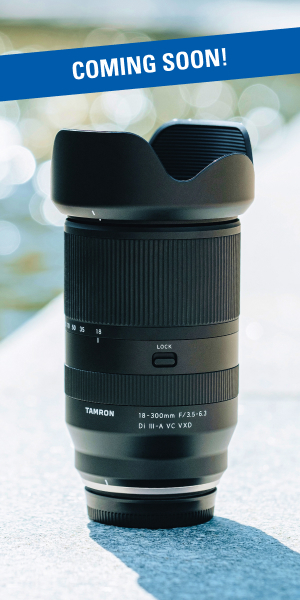Apprendre à photographier les oiseaux, en particulier les oiseaux en vol, est à la fois exaltant et stimulant. Capturer leurs mouvements rapides et fugaces requiert de l'habileté, de la patience et les bonnes techniques. Que vous souhaitiez photographier la descente d'un oiseau sur un lac, le battement d'ailes rapide d'un colibri ou le vol plané d'un pygargue à tête blanche, la maîtrise de la photographie d'oiseaux nécessite de la pratique et de la préparation. Dans ce guide d'initiation à la photographie d'oiseaux, nous partagerons avec vous des conseils et des astuces de professionnels pour vous aider à réussir à capturer de superbes images d'oiseaux en mouvement.
Dans cet article, vous apprendrez :
- Comment photographier les oiseaux et les capturer en vol
- Quels sont les meilleurs objectifs et réglages pour la photographie d'oiseaux ?
- Comment anticiper le comportement des oiseaux pour mieux les photographier
- Techniques telles que le panoramique et l'utilisation de la fonction Auto ISO pour des images plus nettes
- Conseils pour éviter de surexposer les plumes brillantes et améliorer la qualité de l'image
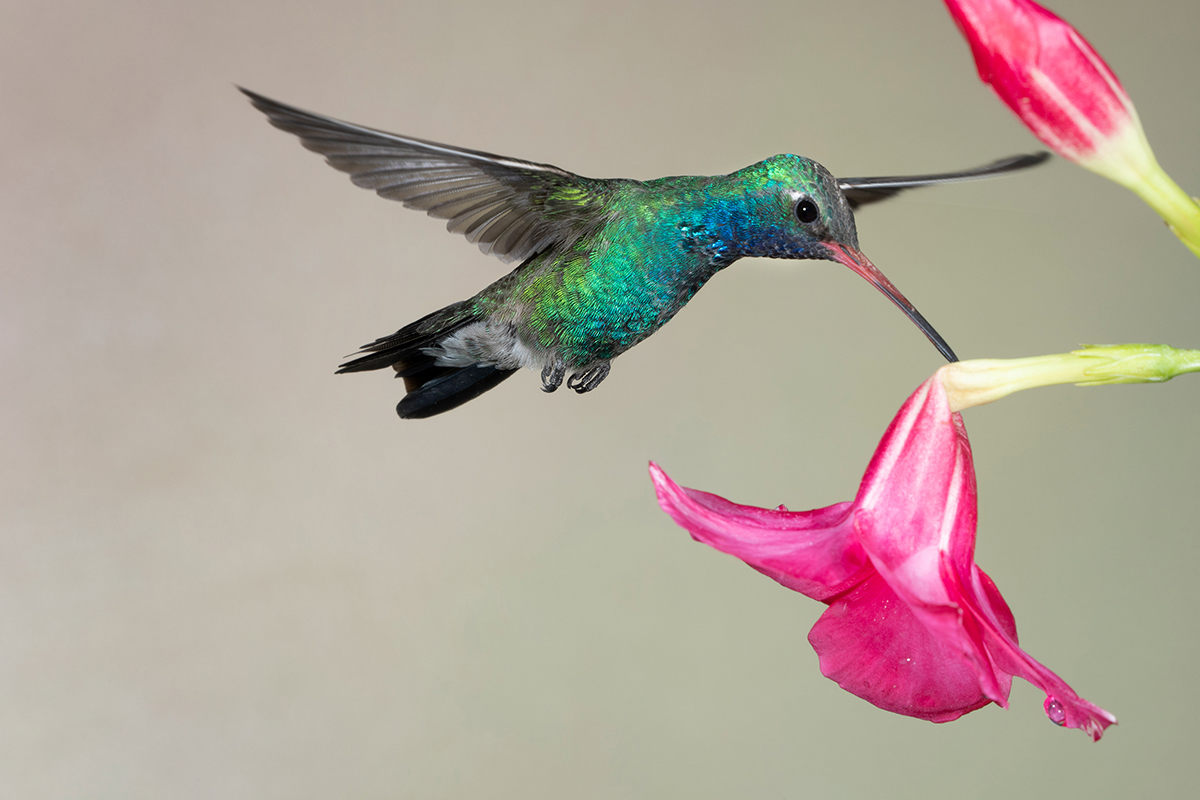
Choisir le bon objectif pour la photographie d'oiseaux
L'acquisition d'un ultra-téléobjectif est essentielle pour photographier les oiseaux en vol. Il est recommandé d'utiliser un objectif d'une longueur focale de 400 mm ou plus, comme le 50-400 mm ou le 150-500 mm de Tamron pour les appareils photo sans miroir, ou le 150-600 mm pour les reflex numériques (vous pouvez utiliser l'adaptateur du fabricant pour votre appareil photo sans miroir). Si vous possédez un appareil photo à capteur d'image, l'utilisation d'un ultra-téléobjectif plein format permet d'augmenter la portée effective du téléobjectif et de rapprocher encore plus le sujet pour obtenir des photos dynamiques.
Objectifs recommandés pour les appareils photo sans miroir
TAMRON 150-500mm F/5-6.7 Di III VC VXD (Modèle A057) pour les appareils photo sans miroir Sony E, Fujifilm X et Nikon Z. Cet ultra-téléobjectif léger et compact atteint 500 mm, ce qui en fait un excellent choix pour photographier les oiseaux. Avec une taille de 8,4 pouces et un poids de moins de 66,3 oz, l'objectif est facile à utiliser avec une tête de trépied à cardan. Le 150-500 est équipé du moteur autofocus linéaire VXD de Tamron qui garantit une mise au point rapide et précise, même en cas de panoramique. Il est également doté d'un système de compensation des vibrations (VC) qui supprime le bougé de l'appareil lors des prises de vue à main levée ou dans des situations de faible luminosité. La VC compense les mouvements panoramiques lorsque le mode panoramique est sélectionné. Remarque : si vous utilisez l'objectif sur un trépied ou avec un cardan, désactivez la fonction VC.
L'objectif offre un pouvoir de résolution élevé pour capturer les détails complexes des plumes, du bec et d'autres éléments d'un oiseau. Cet objectif est étanche aux intempéries et l'élément avant est recouvert d'une couche de fluorine pour faciliter le nettoyage. Il est compatible avec les filtres de Ø82 mm.
TAMRON 50-400mm F/4.5-6.3 Di III VC VXD (Modèle A067) pour les appareils photo sans miroir Sony E et Nikon Z. Cet objectif ultra-téléobjectif 8X offre la longueur focale idéale pour les oiseaux qui se trouvent plus près de vous. Sa plage standard à ultra-téléobjectif vous permet d'effectuer un zoom arrière lorsque de grands oiseaux s'approchent de votre position et un zoom avant lorsqu'ils s'en éloignent.
Le mécanisme de stabilisation d'image VC de Tamron vous aide à prendre des photos stables à main levée, car il supprime les vibrations de l'appareil qui se produisent souvent lors des prises de vue au téléobjectif, lors des panoramiques et dans des conditions de faible luminosité. Le système autofocus VXD assure le suivi précis nécessaire pour les sujets en mouvement rapide. Cet objectif est étanche aux intempéries et son élément frontal est recouvert d'une couche de fluorine pour faciliter le nettoyage. Il utilise des filtres de Ø67 mm.
Objectifs recommandés pour les appareils photo reflex numériques
TAMRON SP 150-600mm F/5-6.3 Di VC USD G2 (Modèle A022) pour les appareils photo reflex numériques Canon et Nikon et pour les appareils photo sans miroir en utilisant l'adaptateur du fabricant. Cet ultra-téléobjectif 150-600 mm offre de superbes performances optiques et dispose d'un autofocus USD (Ultrasonic Silent Drive) rapide et précis pour capturer les mouvements rapides. La stabilisation d'image VC à 5 niveaux dispose de plusieurs modes, dont un mode panoramique pour suivre les oiseaux en vol.
Cet objectif dispose d'une étanchéité et d'un revêtement en fluorine sur l'élément avant pour faciliter le nettoyage. Il utilise des filtres de Ø95 mm.
Vous avez besoin de conseils pour photographier les oiseaux, en particulier les oiseaux en vol ?
Maintenant que vous disposez de l'objectif adéquat pour la photographie d'oiseaux, il est temps de vous concentrer sur les techniques essentielles. Pour apprendre à photographier les oiseaux, il ne suffit pas d'avoir un bon matériel. Vous devez également comprendre le comportement des oiseaux, perfectionner les réglages de votre appareil photo et maîtriser des méthodes de prise de vue spécifiques. Dans les conseils suivants, vous découvrirez comment photographier les oiseaux avec une plus grande précision et figer les mouvements rapides. Vous apprendrez également à créer des images époustouflantes qui mettent en valeur la beauté, les détails et le mouvement de votre sujet.
CONSEIL 1 : Connaître les habitudes des oiseaux que vous photographiez
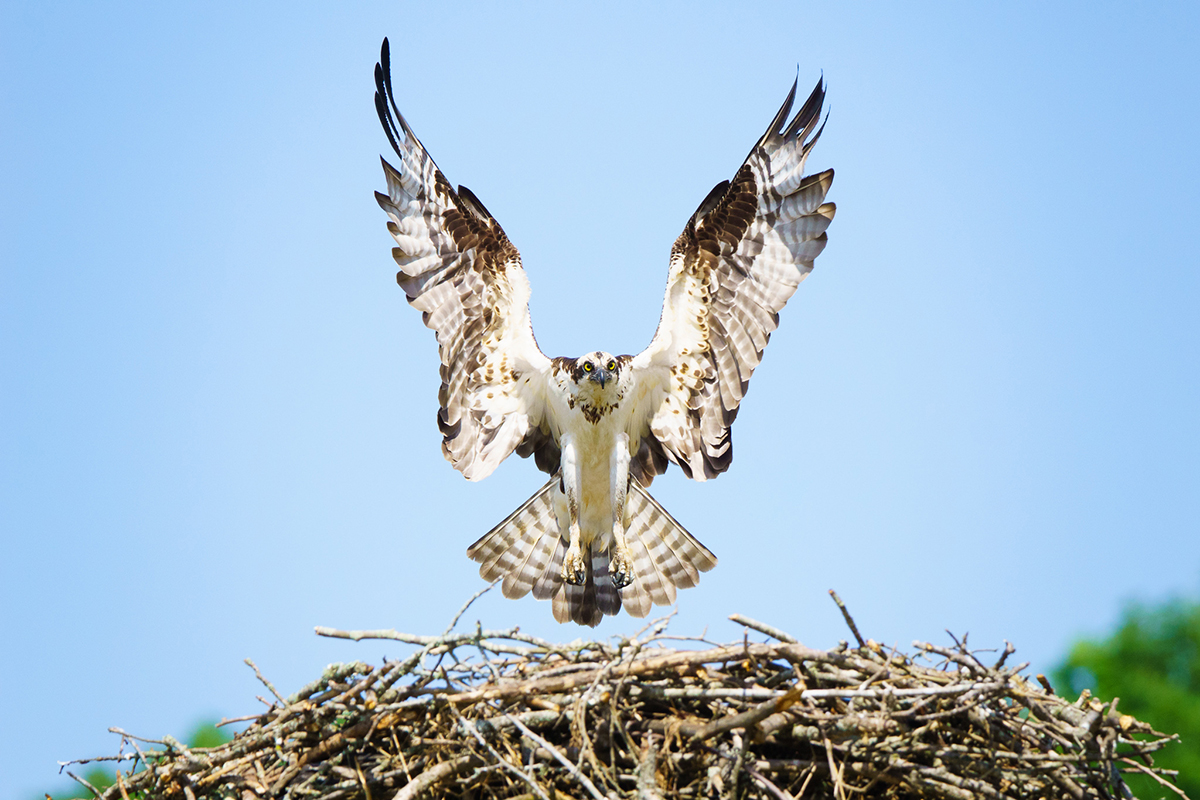
Pour apprendre à photographier les oiseaux, en particulier les oiseaux en vol, il est essentiel de comprendre leur comportement et leurs caractéristiques uniques. En étudiant la façon dont les oiseaux se nourrissent, en reconnaissant les éléments déclencheurs qui les incitent à prendre leur envol et en observant leurs schémas de vol typiques, vous obtiendrez des informations précieuses qui vous aideront à prévoir leurs mouvements. Vous pouvez ainsi mieux anticiper les moments d'action et vous positionner pour prendre la photo parfaite. De plus, en consacrant du temps à la recherche sur les oiseaux en général et sur votre sujet spécifique, vous augmenterez considérablement vos chances de capturer des images dynamiques et convaincantes d'oiseaux en vol.
CONSEIL 2 : Réglages de base de l'appareil photo pour photographier les oiseaux en vol

Lorsque vous apprenez à photographier les oiseaux, il est important de commencer par les réglages de base de l'appareil photo et de les ajuster en fonction des conditions de prise de vue. Tout d'abord, utilisez le mode Priorité à la vitesse d'obturation et réglez votre appareil sur une vitesse d'obturation d'au moins 1/2000 sec pour figer le mouvement des oiseaux en vol. Ensuite, réglez votre mode autofocus sur le suivi continu de la mise au point et sélectionnez la mesure centrale pour une plus grande précision. De plus, utilisez un mode rafale élevé pour augmenter vos chances de prendre des photos nettes en plein vol. Pour de meilleurs résultats, réglez votre balance des blancs sur des conditions ensoleillées. Si vous tenez votre appareil photo et votre objectif à la main, veillez à mettre la stabilisation de l'image en mode panoramique. Toutefois, si vous utilisez un dispositif de stabilisation tel qu'un cardan ou un trépied, n'oubliez pas de désactiver la stabilisation afin d'éviter que vos photos d'oiseaux ne soient floues.
Récapitulatif rapide :
- Priorité à la vitesse1/2000 sec, autofocus continu, mesure centrale.
- Utiliser le mode rafale élevée pour des prises de vue plus nettes en plein vol.
- Régler la balance des blancs au soleil ; ajuster la stabilisation en fonction de l'utilisation de la main ou du trépied.
- Désactiver la stabilisation lors de l'utilisation d'un cardan ou d'un trépied afin d'éviter les flous.
CONSEIL 3 : Comment photographier les oiseaux en plein vol avec une vitesse d'obturation élevée ?
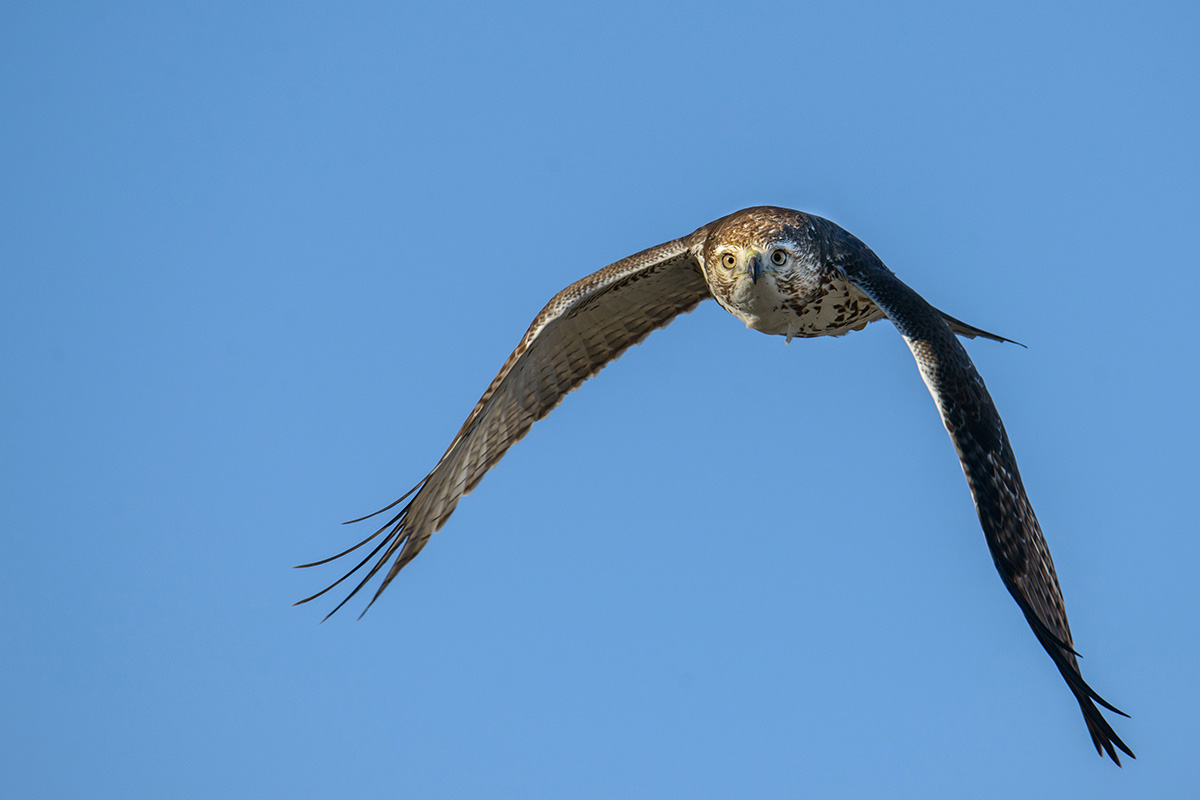
Pour photographier avec succès des oiseaux en vol, il est essentiel d'utiliser une vitesse d'obturation rapide d'au moins 1/2000 sec pour figer l'action. En fonction de la vitesse de l'oiseau et des conditions d'éclairage disponibles, vous devez augmenter ou diminuer la vitesse d'obturation pour obtenir des photos nettes et détaillées. En outre, si votre vitesse d'obturation tombe en dessous de 1/1600 sec, veillez à augmenter votre ISO pour obtenir des vitesses d'obturation plus rapides et préserver la netteté de vos photos d'oiseaux.
Récapitulatif rapide :
- Réglez la vitesse d'obturation sur 1/2000 sec ou plus.
- Ajuster en fonction de la vitesse de l'oiseau et de l'éclairage.
- Augmenter la sensibilité ISO si la vitesse descend en dessous de 1/1600 sec.
- Concentrez-vous sur des prises de vue nettes et détaillées.
CONSEIL 4 : Comment photographier les oiseaux en vol à l'aide de la technique du panoramique
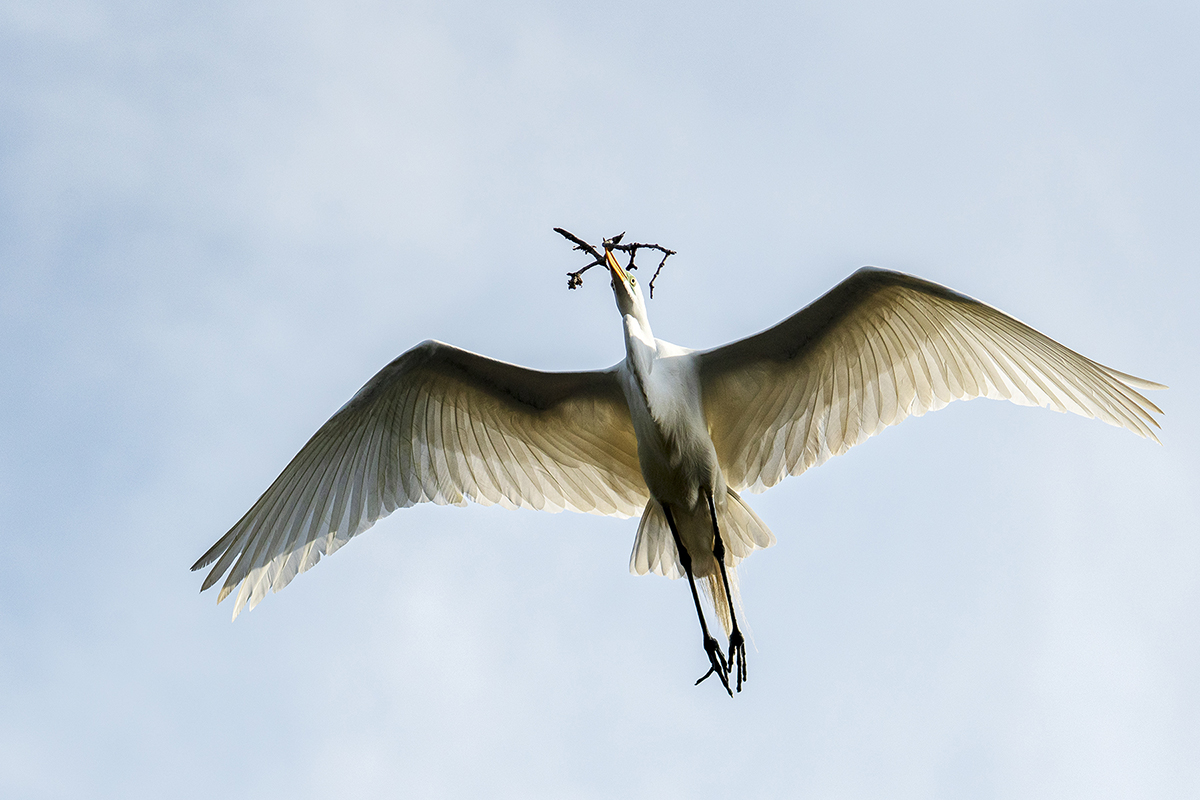
Pour apprendre à photographier les oiseaux en vol, en particulier en utilisant la technique du panoramique, suivez ces étapes simples pour obtenir des images nettes et dynamiques :
- Commencer à suivre l'oiseau de bonne heure en déplaçant l'appareil photo et l'objectif en douceur, en suivant le mouvement de l'oiseau.
- Appuyez sur le déclencheur à mi-course pour activer l'autofocus continu et verrouiller le sujet en mouvement.
- Maintenir un mouvement panoramique régulier tout en gardant l'oiseau centré dans le cadre.
- Appuyer à fond sur le bouton de l'obturateur lors de la prise de vue en mode rafale élevée pour capturer plusieurs images.
- Poursuivre le panoramique après la prise de vue afin d'assurer un suivi fluide et d'éviter les mouvements brusques susceptibles de provoquer un flou.
ASTUCE 5 : Régler la luminosité de l'image à l'aide de la fonction ISO automatique
La fonction Auto ISO est avantageuse dans des conditions d'éclairage fluctuantes. L'activation de la fonction Auto ISO permet à l'appareil photo d'ajuster automatiquement ses paramètres afin d'obtenir une vitesse d'obturation rapide. Dans ce cas, passez en mode priorité à l'ouverture et réglez votre appareil photo sur l'ouverture la plus large. La fonction ISO automatique sélectionnera la vitesse d'obturation et la sensibilité ISO optimales pour la prise de vue.
CONSEIL 6 : Évitez d'éclaircir les blancs
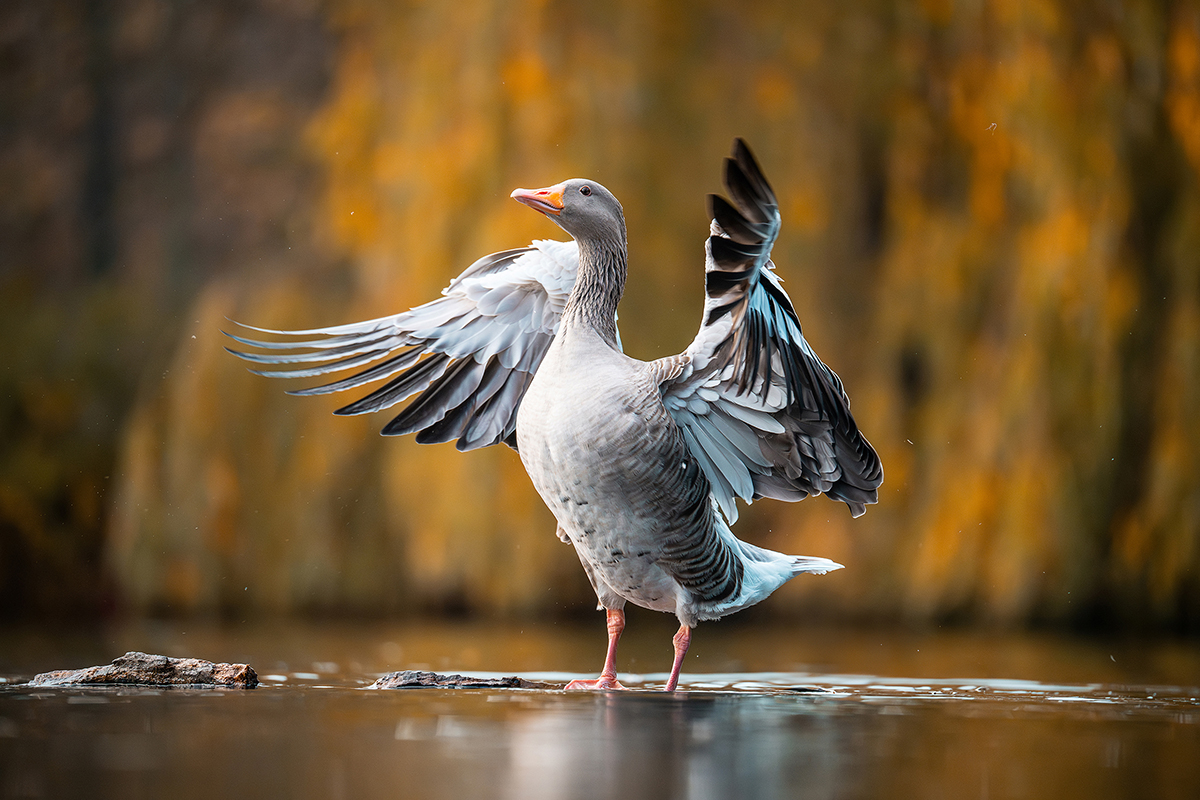
Lorsque l'on photographie des oiseaux aux couleurs contrastées, comme les pygargues à tête blanche, la surexposition est un problème. La prise de vue par temps couvert ou dans des zones où la lumière du soleil est diffuse permet d'éviter d'éblouir les blancs et d'obtenir une exposition équilibrée. Si ce n'est pas possible, vérifiez souvent votre histogramme pour voir si vous avez surexposé les blancs de votre sujet et ajustez votre compensation d'exposition si nécessaire.
CONSEIL 7 : Cadrer soigneusement la prise de vue pour mettre en valeur le mouvement complet
Lorsque vous apprenez à photographier des oiseaux en vol, la composition est tout aussi importante que la netteté et l'exposition. Essayez toujours de cadrer l'oiseau entier dans la photo, en veillant à ne pas couper les parties critiques telles que les ailes, la queue ou le bec. Le fait de laisser de l'espace autour de l'oiseau, en particulier dans la direction où il vole, donne à votre photo une impression de mouvement et de liberté. En outre, évitez de placer l'oiseau au centre ; utilisez plutôt la règle des tiers pour créer une image plus dynamique et plus naturelle. Une composition réfléchie rehaussera votre photographie d'oiseaux et vous aidera à raconter une histoire visuelle plus forte.
Récapitulation rapide : Cadrez votre photo pour une meilleure composition
- Éviter de couper les ailes, la queue ou le bec lorsque vous photographiez des oiseaux en vol.
- Laisser un espace supplémentaire devant l'oiseau pour souligner le mouvement et la direction.
- Utiliser la règle des tiers au lieu de centrer l'oiseau pour une image plus dynamique.
CONSEIL 8 : Entraînez-vous. Entraînez-vous. Pratique
Une pratique constante est essentielle pour apprendre à photographier les oiseaux. Attendez les moments décisifs, par exemple lorsque les ailes d'un oiseau sont complètement déployées ou qu'elles sont éclairées à contre-jour par le soleil. Faites la mise au point avant que l'oiseau ne commence à se poser pour capturer une image nette avec les ailes et les pattes déployées.
Apprendre à photographier les oiseaux et capturer des images époustouflantes
En appliquant les conseils de ce guide pour débutants sur la manière de photographier les oiseaux, vous libèrerez votre potentiel créatif. Vous capturerez bientôt des images époustouflantes d'oiseaux en vol et dans leurs magnifiques habitats naturels. Avec les bons réglages de l'appareil photo, le choix judicieux de l'objectif et des techniques telles que le panoramique, vos photos d'oiseaux prendront de l'ampleur. En étudiant le comportement des oiseaux, vous anticiperez les moments magiques et créerez des photos nettes et dynamiques qui donneront vie à vos sujets.
Découvrez ces objectifs et bien d'autres encore lors d'un revendeur Tamron agréé dans votre région ou visitez le site Magasin TAMRON aujourd'hui.
Plus de conseils photo | Regarder les vidéos | En savoir plus sur les objectifs Tamron | Galerie de photos

